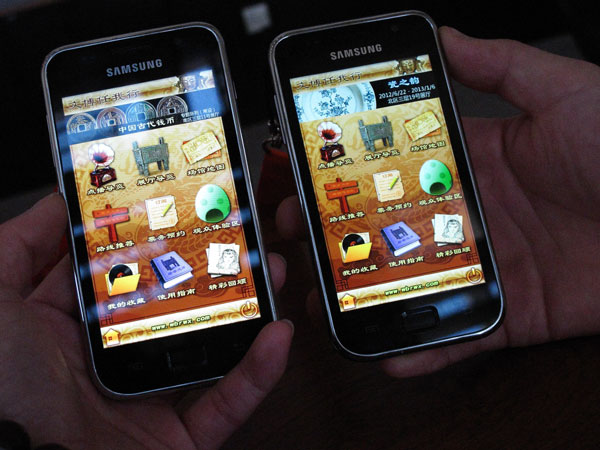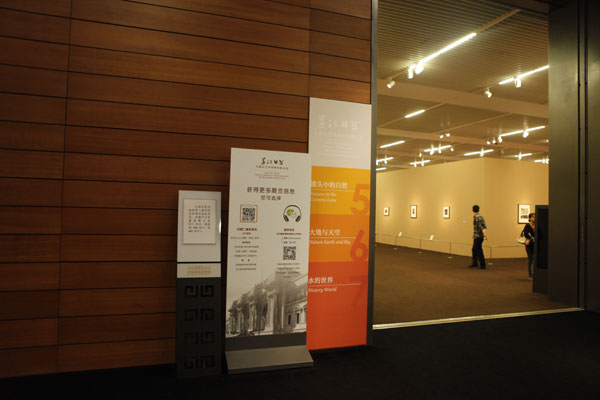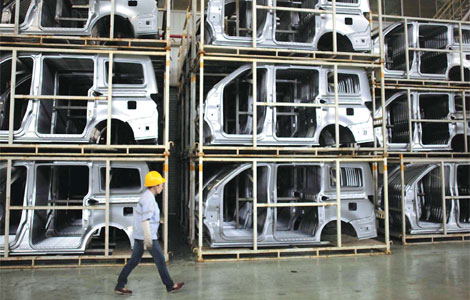Art at your fingertips in museums
Updated: 2013-06-11 07:50
By Liu Xiangrui (China Daily)
|
|||||||||||
 |
|
Two visitors use the National Museum of China's smart phone app to tour the museum. [Photo by Jiang Dong / China Daily] |
The museum plans to boost the service on its Weixin platform. Meanwhile, more functions, such as bookings, are being developed on the platform, he adds.
According to Huang, applying new technological tools has greatly improved the efficiency of the museum's operation and lowered its costs.
"In the past, we often had to spend a lot of money to develop or purchase hardware to help visitors.
"Now we only have to focus on the content. Platforms like Weixin and channels like the Internet are already there for our use."
The museum has made remarkable progress in applying digital technology.
Since 2009, it has developed two apps, one for self-help and one for exhibition information based on Android and IOS systems. They immediately received widespread attention and were recommended on Apple's App Store and many android app platforms.
At the same time, it has tried to build "never-ending" online virtual exhibitions with 3-D technology.
Many exhibitions staged in the museum in the past two years are still accessible online. For those who can't come to the museum, they can appreciate the exhibits through the 3-D web page which vividly recreates the exhibition hall.
Zheng Qinyan, from the China Central Academy of Fine Arts who has studied both Chinese and Western museums, believes the application of new media and other digital technologies points to a new trend for Chinese museums.
She notes that traditional historical and heritage museums in China have long been unable to fully carry out their responsibility of public education.
 |
|
Two-dimension codes and Weixin accounts can easily be found and used in the National Museum of China. [Provided to China Daily] |
"Chinese museums need to adjust their role and further open up to the public. The fast development of digital technology and social media has become a useful tool," Zheng says.
In recent years, a large number of Chinese museums have used social media like micro blogs to communicate with the public.
For example, the National Museum of China's official accounts on Sina Weibo and Tencent Weibo have grabbed 3.8 million followers since they were opened in 2010, while the Palace Museum has 4.3 million followers.
Their micro blogs have opened a new window and shortened the distance between museums and the public, according to Zheng.
She suggests that many Chinese museums can actually compete with their international counterparts in terms of new technology. However, there is still room for improvement in their services.
"How to ensure the public get what they really need through the new technological tools is an important subject that most Chinese museums should think about," Zheng says.
Contact the writer at liuxiangrui@chinadaily.com.cn.
Related Stories
To charge, or not to charge Weixin users 2013-04-19 07:13
Tenpay to serve Weixin users 2012-09-19 10:46
Ancient artifacts, modern museum 2013-06-09 08:12
A glance at Museum of Civilizations 2013-06-04 13:21
A museum is austerity's victim 2013-06-02 08:02
Today's Top News
Fifth manned mission due on June 11
Better Sino-US ties benefit world
China to strengthen cooperation with GMS
China to hold safety overhaul
Work like a dog and suffer
8 students confirmed to have died in bus fire
Ex-CIA man says he exposed US spy scheme
China, US ready to
open a new chapter
Hot Topics
Lunar probe , China growth forecasts, Emission rules get tougher, China seen through 'colored lens', International board,
Editor's Picks

|

|

|

|

|

|





